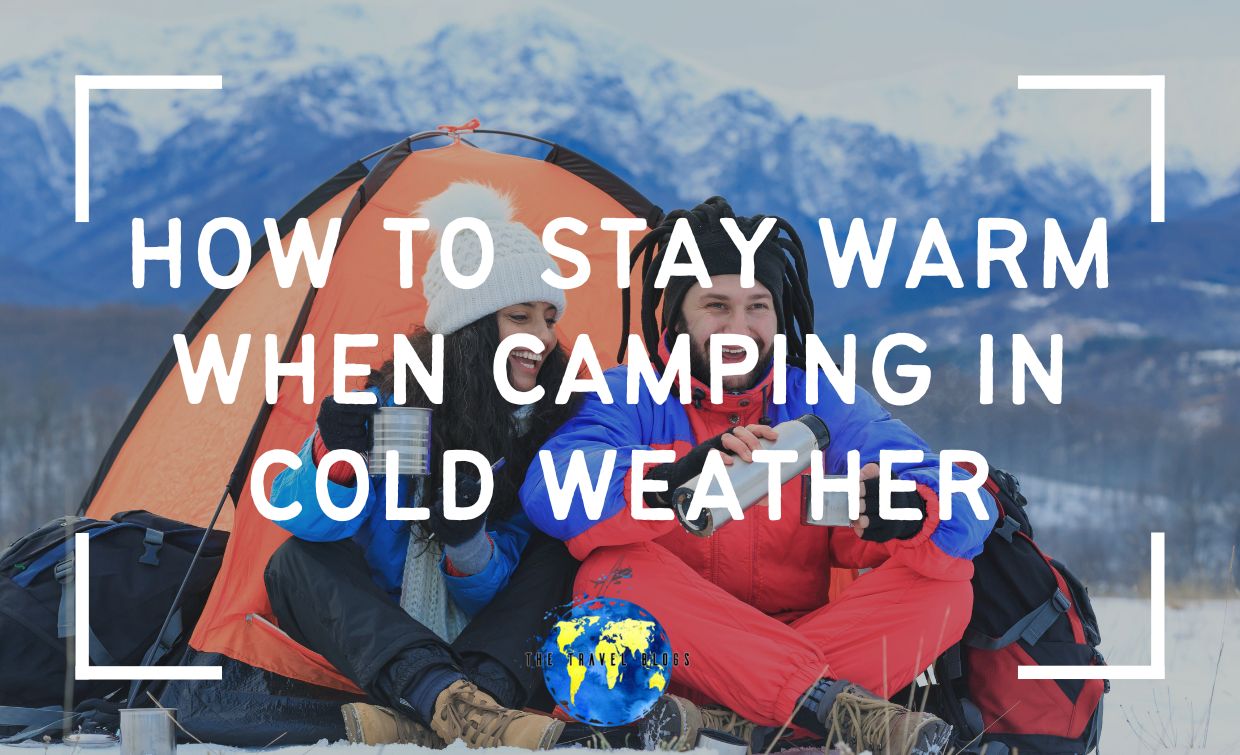Don’t let the cold nights hold you back.
Taking a rest under the scenery of the moonlit sky certainly is a beauty for your thoughts. But what about the cold nights? Can you enjoy camping in the winter?
Of course you can. To help you prepare for a trip where the temperatures may be low, I have put together this post with advice on how to stay warm when camping in cold weather.
Moos of it is not rocket science, just a mixture of common sense and preparation, but there may be a few things you have not yet considered.
By finding this post, you have already taken a huge step in the right direction, so let’s crack on and take a look at how you can enjoy a cosy nights sleep, whatever the weather.
Coming your way in this post - click to expand ->
Note – Please know, some of the external links on this page are affiliate links, this means that if you purchase after following one, I make a small commission from the sale at no additional cost to yourself.
1. Always Check the Conditions Before Your Camping Trip
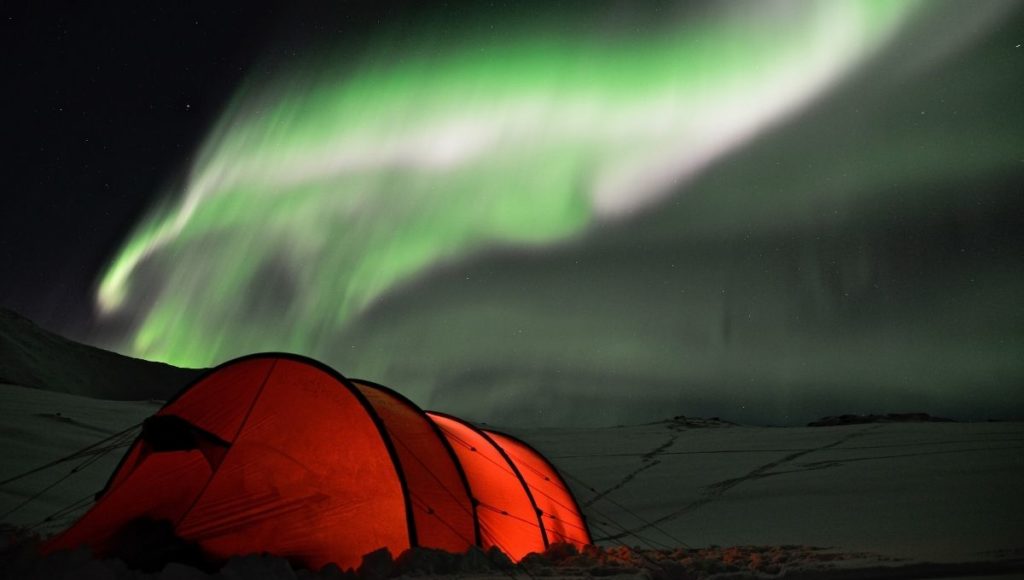
Before pressing down on the launch pad, gauge the weather conditions outside. Being already erratic enough on a warm summer evening, it is even more important to know if the wind gusts in the campsite region will suddenly blow away your tent or if the winter camping terrain will turn your skin brittle.
With temperatures between 30 to 40 degrees F, it is bound to get a little uncomfortable (even with socks, a jacket, and a hat) and may even be difficult for birds to fly.
In addition to that, you may also want to take a side note of the hazards near the winter camping trails and the updated status of the location – whatever you could find about your winter camping site.
Navigating down the wilderness may just be as important, but knowing how to keep yourself warm in the middle of the night is even more critical to ensure that your trip for the season is not impossible to sleep through, let alone survive.
2. Effectively Manage your Tent Set-Up
When setting up your shelter, you should properly bury down the post and tent stakes and ensure that the tent floor is not placed on moist ground. Remember – wet equals cold! Placing your bag on the ground around the inside of the tent will also prevent further loss of body heat.
In cot weather, a camping cot is a good idea as it will get you off the ground, just make sure you spend some thought to making your camping cot comfortable.
Following that up by positioning each sleeping pad closely should further conserve your body heat even while sleeping. Opting for a double-wall tent, or creating a tiny opening in your single-wall tent will also prevent condensation inside.
With your hot breath and body temperature amping up the heat inside the camping tent, cold air molecules will condense, forming moisture inside your belongings, your tent, and even in your clothing – a tight spot that will drain your energy and warmth.
Hydration is good, but unless you want a comment on how purple your fingers are becoming, then perhaps you might want to avoid any source of water when the season calls for cold weather camping.
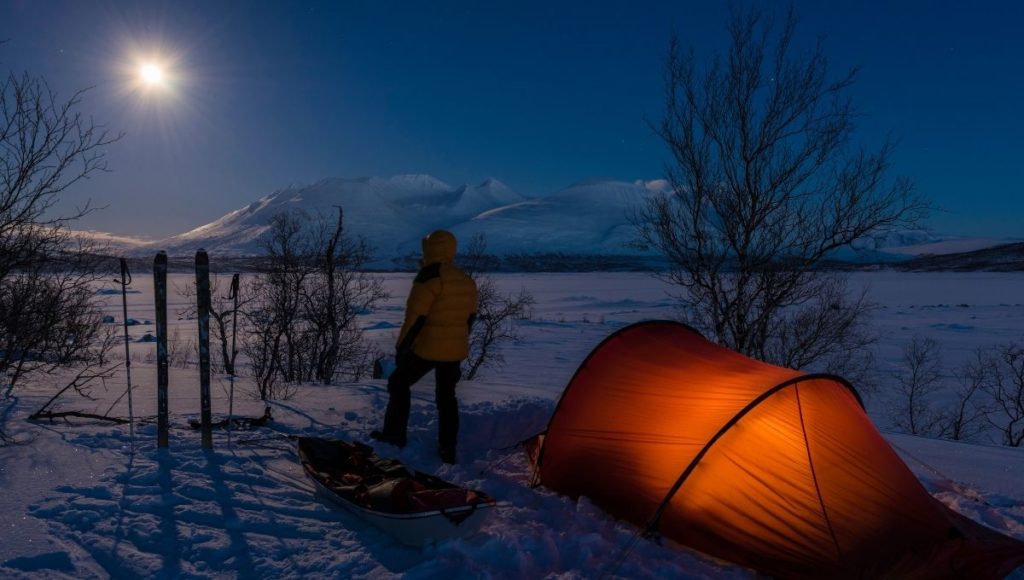
3. Bring and Use the Right Clothing and Gear
A top fact for backpackers or camping enthusiasts: always bring the right clothes and equipment. From having the right sleeping mat or sleeping bag liner to keep you warm, to having enough layers of the right fabric to maintain its warmth, the difference in “dressing for the occasion” is critical for sleep and warmth amidst the cold winds and winter conditions.
In terms of your options for camping clothes, skin-tight garments restrict blood circulation, wearing synthetic fabrics, cotton, or wool retains water and easily grows bacteria on your skin, and moist clothes will freeze your body pretty quickly.
Layers will be your friend, for the most part, perhaps pack a balaclava to minimize the heat coming off of your head, and pack socks, gloves, a quilt, and a winter hat to complete your arsenal.
There might not be time for skiing activity, but you will surely rock the look. On the other hand, make sure that your gear – sleeping bag, tent, foam pad – are all winter grade and will maintain your body heat well.
You may want to look at the R-value of the sleeping bag or its ability to insulate your body and maintain your core temperature.
Looking at the rating of each author will take time for sure, but it might be worth it to search for a while for the sake of your safety.
4. Avoid Moisture At All Costs
Condensation is the enemy of any cold-weather camper – it will be on top of you and before you know it, you are in your sleeping bag, cold despite the heat retention of your gear. Even sweating is like letting the cold directly affect you, dropping the temperature as it evaporates, then hypothermia or frostbite when left unmanaged.
To avoid this, your tent should have proper ventilation, with vents or a little opening in the entrance to release your hot breath and avoid the formation of moisture inside the tent. A vapor barrier might also be a great option for the cold outdoors to avoid the diffusion of vapors.
If you want a little drinking water, then using a stainless straw will lessen the risk of toppling a water bottle.
Oh, and like we said, sweating is also a big no-no. Multiple layers might be nice to keep you all warm and toasty, but having beads of sweat is as bad as swimming in the nearby lakes and areas- possibly resulting in frostbite if you stay drenched for a while. Remember to keep on adding and removing layers to maintain the balance.
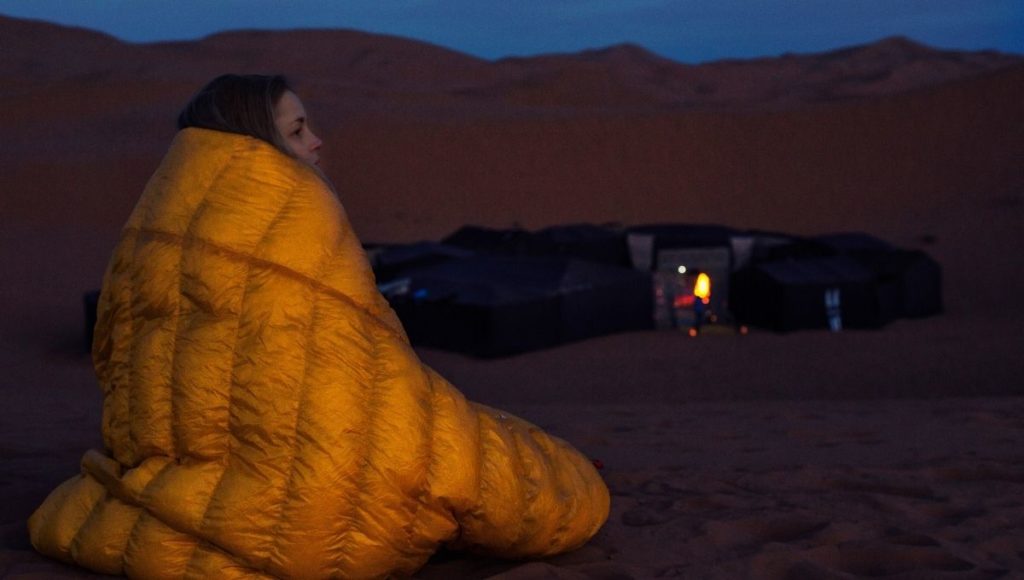
5. Insulate, Insulate, Insulate
Insulation is Everything! You will not stop losing heat, even if you are an expert in such a route. It is important to make sure that the things you own, your bag, and everything else have sufficient insulation. Starting with the most obvious one, your sleeping gear should be insulated, taking note that each one performs differently down the line.
A good bed setup would be to add a base layer of closed-cell foam on your chosen area or the ground, then add another layer of air mattress or sleeping bag that has a decent R-value. Top that all off with insulated gloves to secure your hands, a layer of puffy jacket, some boot liners, warming footwear, sufficient underwear, and pants that are perfect for such a trip, and you are good.
You may also want to top your tents with a layer of canvas or radiation barrier to isolate the conditions of the outdoors. If you are planning to pack hot meals or drinks, place them inside insulated containers to avoid precipitation and to help them stay warm.
Again, moisture is not a friendly company! (Maybe a photo of a few cute dogs would relay these camping tips better).
6. Don’t Skimp-out on Your Sleeping Bag and Sleeping Pad
Most tricks would tell you this: when going on a winter tent camping adventure, you will either be suffering from constant heat loss, or you will be warm enough to get through the night without shivering in your sleeves.
Our advice? Do not skimp out on the price of sleeping bags. A backpack (maybe not a summer bag) may still hold despite being of low quality, but sleeping pads will not warm you up sufficiently if their specifications such as R-value, heat loss, and comfort rating are not up to par.
We can all hope to solve it with a light trick or two, but somewhere down the line, the quality difference will always be substantial. Its component might not be too puffy, it might do nothing for you, conduction might be an issue with thin pads, shells, and lack of air pockets, sections of your body may touch dirt floor – it benefits no one.
The requirements of this season will make you spend plenty, but the danger of having subpar features will cost more than one camping gear.
Free shipping should not be your benchmark. Trust your gut, trust the digits, follow various tips, and for winter tent camping, do not use subpar products.
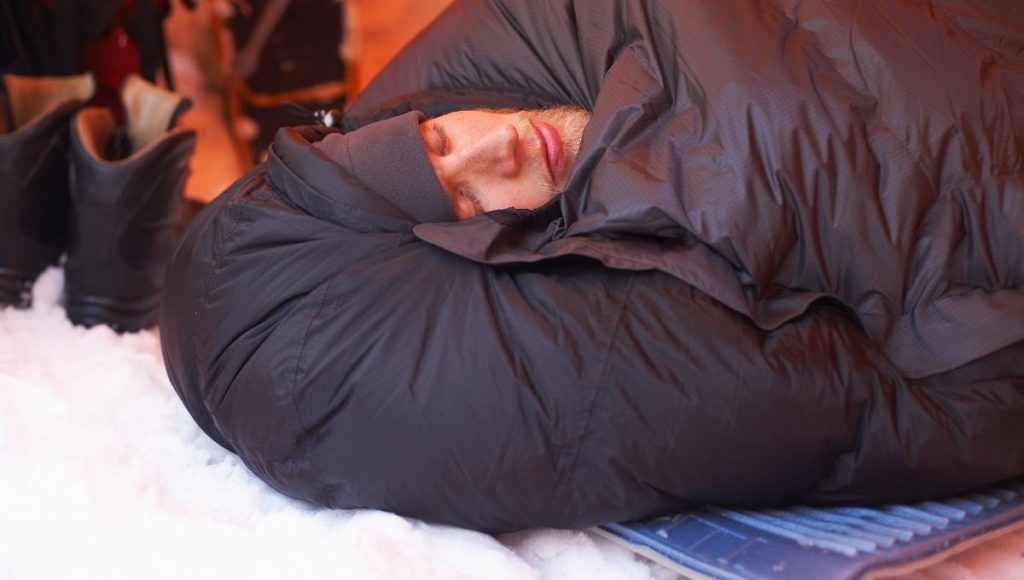
7. Any Type of Warmer Will Do
A campfire may be sufficient for a while, but if the wind becomes too strong to start one, being creative or being prepared are your only choices. In preparing for cold weather camping, you should have items inside your bag that can serve as insulation against the frost.
A space heater is an effective tool to control the warmth within your camp, but it would be hard to fit inside a small tent or awning. Pieces of canvas may be set to keep the tent’s environment warm and free of moisture, and you may also add a pair of hand warmers, a handy stove, heat packs, or even an insulated space to store your hot water in.
If these are rendered moot, then getting creative is your next option. For instance, a non-insulated hot water bottle can be placed in the middle of your legs instead of your toes to keep the blood pumping within your femoral artery – serving as a little heater for your extremities.
Cold temps will easily freeze your water supply, making boiling snow with your handy stove a great way of staying warm and having a reliable source of light heat. Sure, sometimes these options are not as effective as like, the sun, but perhaps it is just nature’s way of saying, “deal with it,” or “consider snowshoeing to stop yourself from sinking.”
Plus it might do wonders with the dexterity of your hands. Who knows?
8. Eat Best to Get Rest
More calories equate to more power and energy (biology, of course). It might be tempting to keep on eating healthy foods to emphasize your best feature, but you would have to trust the trees and ice crystals to keep your secret and eat a whole lot of calories for the cold night.
Calories are like the body’s fuel canisters – you need enough of a snack to keep your body warm longer. For breakfasts, a menu of cheese, chocolate, and nuts to pair with your hot coffee certainly is not the worst thing to have.
As for dinners, eating lots will keep your batteries running just as well. With heaters or perhaps a blanket being unreliable for the most part, the only way to keep the lid on your temperature is by consuming a lot of your favorites as you can.
The essential amount might not seem classy or sexy, but your partner will surely not mind for as long as your foot is not taking on a darker hue. No crowds in this area to judge you too – so let that cart (or maybe sled) of food and bottles of chocolate be eaten.
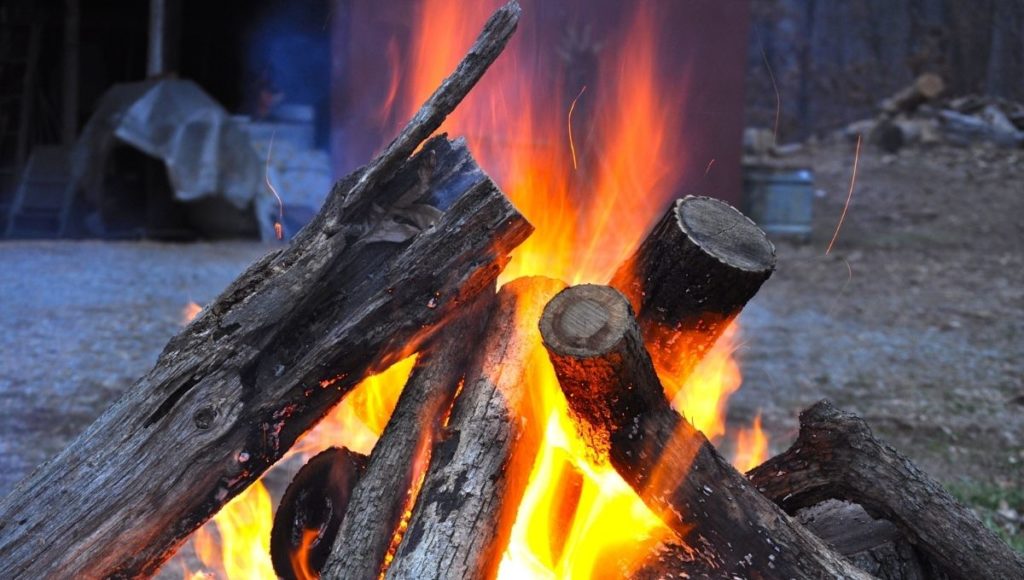
9. Fear The Cold – Hide Your Gear
If even a car breaks down when it gets buried under a few feet of snow, your gear is no different. From your hot water bottle to your boots and electronics, you need to keep it somewhere that will not affect any area inside your shelter.
A hot water bottle, for example, can be snuggled against your legs to promote circulation, your boot liner may be placed inside a stuff sack to prevent hardening, and electronics may be stashed at the bottom of your sleeping bag along with your batteries and anything that might be sensitive to the frigid wind.
It might just be a bunch of materials that you could easily replace, but with the distance that you have to cover before getting a new one, a little thought before frying its panels might be a good idea.
10. Know Your Body
You do not need emails about what you feel, you know what keeps you on your toes, and you know what leaves you in your bed, cold and shaking. Whether it be doing jumping jacks before sleeping or wearing socks whenever you go to bed, do everything that keeps you warm.
If it is air mattresses that keep you comfortable or a mummy bag that brings a bit of life back into you, stuff it inside your bag.
Despite the numerous articles that you could search for, the best tip that anyone could ever give you for when you travel is to listen to your body – listen to what you need for staying warm, to what kind of food it craves, to its elaborate plan to get sleep and be able to chill for a while.
Feel like you have to pee? Grab a pee bottle (yes, women can do this with a wide opening). It might be wise to bring pee funnels especially made for ladies, or rather, women if the thought of having to go under a few feet of snow is not your definition of fun and comfort.
Feel like your back is cold? Add more base layers or get some quilts. The point is, to stay warm is to keep your body comfortable; if you are not comfortable in your current spot or your bed, then you might not be doing something right.
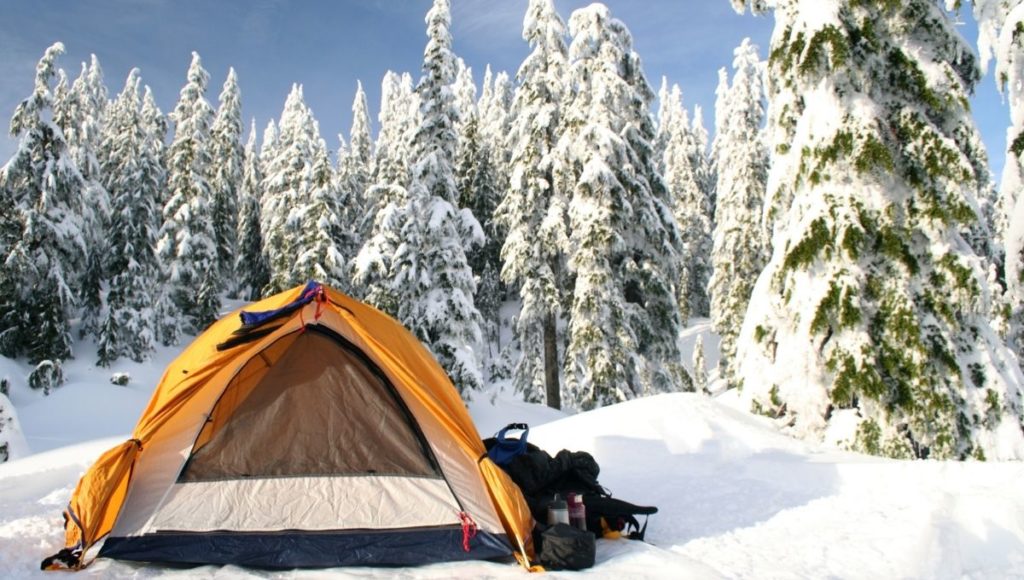
Final Thoughts: How To Stay Warm When Camping In Cold Weather
With the extra skills needed to tread this perilous trail, it needs even more than just a pair of boots and a commemorative photo to go backpacking with your friends. Despite that, expertise is just a title that you could get with sufficient caution brought by exposure, in addition to various tips. Considering that you have already reached this area of the blog? You will reach the gold mine faster than snow melts.
You may also like:
